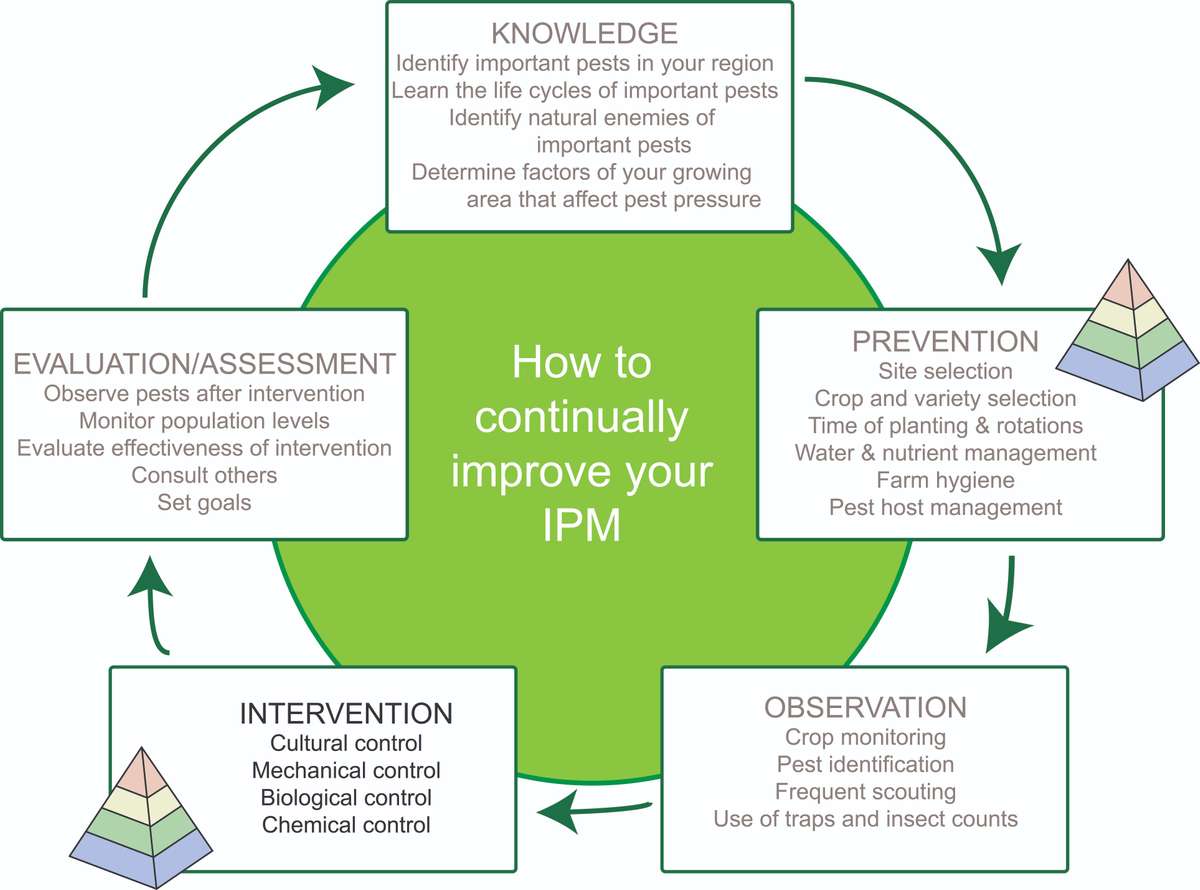How Pestwise can Save You Time, Stress, and Money.
How Pestwise can Save You Time, Stress, and Money.
Blog Article
8 Easy Facts About Pestwise Described
Table of ContentsThe Only Guide for PestwisePestwise Things To Know Before You Get ThisTop Guidelines Of PestwiseOur Pestwise PDFsThe 45-Second Trick For PestwiseFascination About PestwiseThe 4-Minute Rule for Pestwise

Q. Define "integrated insect monitoring" (IPM) and checklist several possible control methods that may be made use of in an IPM method. A. Integrated pest monitoring is the combining of suitable bug control techniques into a solitary plan to minimize parasites and their damage to an acceptable level. Bug control methods may consist of: host resistance, organic control, cultural control, mechanical control, sanitation, and chemical (pesticide) control.
Pestwise - An Overview
What can you do to maintain the insects you are attempting to control from coming to be resistant to the pesticides you use? A. Pest resistance can be decreased by using incorporated parasite monitoring and rotating the kinds of chemicals utilized.
Bugs are an essential danger to the farming organization, and integrated pest management helps growers address and mitigate these risks. Integrated insect management utilizes several methods in complicated, therefore being a much more efficient option to the problem. Wasp Nest Removal. In particular, removing aggressive chemical approaches permits for minimizing damage to people and the environment by utilizing all-natural and much safer options instead
Top Guidelines Of Pestwise
The objective of integrated insect monitoring is to reduce this injury and control acceptable invasion levels instead of eliminate all undesired populaces. This is why it is very important to understand what measures are warranted in each case and usage aggressive ones only when various other integrated monitoring methods do not function. Integrated administration alleviates the negative repercussions of a non-IPM approach, and the major benefits of IPM Advantages of IPM.
An appropriate understanding of the invasion range figures out if the issue should be dealt with. are the following parts of an IPM program since it is necessary to realize if the microorganisms make prospective threats and select the incorporated management alternatives or the certain pesticide use. mean to reduce infestations by using different agronomic strategies.
An Unbiased View of Pestwise
Integrated management choices in an IPM program beginning with more secure to more hostile ones. The above-mentioned incorporated administration facets help understand exactly how to intend and execute an IPM program step by action: Monitor your plants frequently.

To name a few, IPM cultural methods include the following field management strategies: dirt therapy; option of ideal plants; plant rotation; interplanting or strip cropping; selection of growing days; weed control; use catch plants. Desirable dirt problems accelerate plant development, and energetic crops are a lot more resistant to invasions. Pest Control. In integrated bug administration, soil screening helps understand if the field is ideal for the production of this or that plant, and after that use the doing not have nutrients to ensure plant healthy development
What Does Pestwise Mean?
No-till techniques help avoid dirt erosion, contributing to sustainable farming. However, when tilling is needed, it is recommended to conduct it in the loss to subject them to all-natural adversaries and serious weather condition. Healthy and balanced plants and seeds determine successful crop growth, so it is very important to choose pest-free growing material with strong roots.
Therefore, among various other applications, plant turning can be successfully utilized as an incorporated parasite management method. Pests spread out slower if rows of various plant types separate their host plants in intercropping or strip cropping, which is likewise utilized in the integrated parasite monitoring you could try this out system. Alternatively, invasions boost when plants of the same plant kind or family members expand together.
, as well as tomatoes. Planting trap plants in patches is another alternative for IPM intercropping. This integrated bug management method suggests bring in insects to details plants and after that controlling them with chemical or mechanical techniques.
Getting The Pestwise To Work
Obstacles are case in points of physical IPM techniques. Allow's take a better look at them. Getting rid of or choosing insects out by hand is a time and labor-consuming option that is extensively applied in integrated administration and natural farming. Mature bugs or their eggs and larvae are collected by hand and damaged.

Division of Plant Sciences. College of Missouri. Soil solarization is an effective integrated administration method to decontaminate the area by warming it in an all-natural way. This incorporated administration method suggests an usual method of ruining bugs by predators, parasitoids, microorganisms, and various other biological control agents (also known as antagonistic microorganisms). The function of biological control in IPM is to.
The Best Guide To Pestwise
With time, their populace ended up being a real nuisance to farmers alongside aboriginal kangaroos or dingoes. The walking cane toad is another case illustrating incorporated biological control failure in this regard when it rejected to quest the target varieties and came to be a parasite itself. Parasitoids create on or within their hosts to eventually kill them after growing.
Report this page